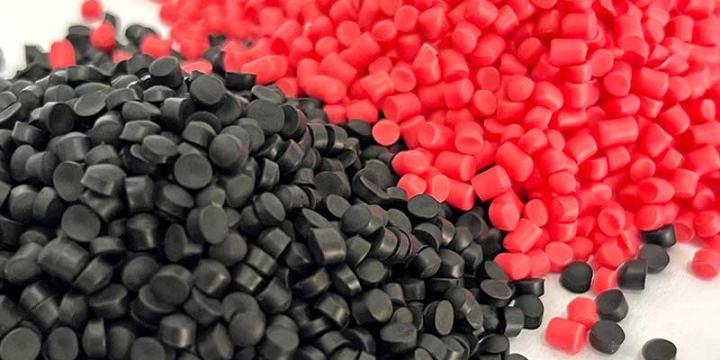Insulating Compound for LV Cable
Cable insulation is crucial for the safe and efficient operation of low voltage (LV) cables. It’s essential to choose the right insulation compound to protect your cables and ensure reliable performance.
This article explores the importance of cable insulation, particularly for low voltage cables, and provides insights into the key characteristics of insulation compounds. We’ll also cover what to consider when selecting the right material for your cable insulation needs.
What is Cable Insulation and Why Is It Important for Low Voltage (LV) Cables?
Cable insulation is a layer that covers electrical cables, preventing electrical current from leaking and ensuring the safe transmission of electricity. In low voltage cables, insulation is essential for preventing short circuits, electrical fires, and electrocution.
For LV cables, proper insulation helps protect the electrical components from environmental damage such as moisture, chemicals, and extreme temperatures. It also enhances the overall safety and longevity of the cable, making sure that electrical power can flow efficiently and reliably without causing harm to surrounding materials or individuals.
Key Characteristics of Low Voltage Cable Insulation Compounds
When selecting insulation compounds for low voltage cables, there are a few key characteristics to consider:
- Dielectric Strength – The ability to withstand electrical stress without breaking down.
- Flexibility – Insulation needs to bend and adapt to various installation environments without cracking.
- Thermal Stability – It must perform well in different temperature ranges, from cold to high heat.
- Chemical Resistance – The compound should resist degradation from exposure to oils, acids, and other chemicals.
- UV Resistance – Protection from ultraviolet radiation ensures that the material won’t degrade when exposed to sunlight.
These characteristics ensure that the cable insulation performs effectively and withstands long-term use under various conditions. In the next section, we will dive deeper into the performance standards for LV cable insulation compounds.
Performance Standards and Key Specifications for LV Cable Insulation Compounds
To ensure the highest quality and safety, insulation compounds for LV cables must meet specific performance standards and specifications. Some of the most critical specifications include:
- IEC 60228 Standards – These international standards define the requirements for electrical conductors and their insulation.
- UL Listed – Insulation materials that are UL certified meet rigorous standards for safety and performance.
- Voltage Rating – The insulation must be capable of handling the maximum voltage in the system.
- Temperature Rating – Insulation compounds must remain stable and functional at high and low temperatures.
- Flammability – The material should resist ignition to prevent the spread of fire in case of failure.
The following table outlines some of the key specifications for LV cable insulation:
| Specification | Standard Value | Test Method |
|---|---|---|
| Dielectric Strength | 10-15 kV/mm | ASTM D149 |
| Voltage Rating | 600V to 1kV | IEC 60228 |
| Temperature Rating | -10°C to 90°C | Thermal Cycling Test |
| Flammability | UL VW-1 | UL 1581 |
| UV Resistance | UV stabilized | UV Weathering Test |
Common Materials Used for Low Voltage Cable Insulation
Low voltage cable insulation is made from various materials, each offering unique benefits. The most commonly used materials include:
- PVC (Polyvinyl Chloride) – A versatile and cost-effective material with good flame resistance, commonly used in residential and commercial applications.
- PE (Polyethylene) – Known for its low cost, ease of processing, and excellent resistance to chemicals and moisture.
- XLPE (Cross-Linked Polyethylene) – Offers higher thermal stability and dielectric strength, making it suitable for more demanding environments.
- EPR (Ethylene Propylene Rubber) – Used in cables exposed to extreme temperatures and environments, offering excellent flexibility and aging resistance.
Each material has its strengths and is selected based on the specific requirements of the application. Let's look at these materials in more detail.
Factors to Consider When Selecting LV Cable Insulating Compounds?
When choosing the right insulating compound for LV cables, several factors must be taken into account:
- Application Environment – The insulation should be resistant to environmental factors such as moisture, chemicals, and UV exposure.
- Voltage and Current – Ensure that the insulation can handle the required voltage and electrical load.
- Temperature Range – Choose a material that performs well in the temperature range expected in the installation environment.
- Cost and Availability – While performance is essential, the cost and availability of the material also play a critical role, especially in large-scale installations.
- Regulatory Compliance – The material should meet industry standards and certifications for safety and performance.
Understanding these factors helps ensure the longevity, safety, and efficiency of the cable system. In the next section, we'll review the key takeaways from the discussion.
Conclusion: Choosing the Right Insulating Material for Reliable LV Cable Systems
Choosing the correct insulating compound is crucial for ensuring the reliability and safety of low voltage cable systems. Whether you're dealing with residential, commercial, or industrial applications, understanding the material's properties and selecting based on specific needs will guarantee long-term performance and reduce the risk of failure.
FAQ
1. What are the common materials used for low voltage cable insulation?
Common materials include PVC, PE, XLPE, and EPR, each offering different benefits for flexibility, thermal stability, and chemical resistance.
2. Why is flexibility important in cable insulation?
Flexibility ensures that the insulation can bend without cracking, making installation easier and preventing damage during cable movement.
3. How does temperature impact cable insulation?
Temperature extremes can cause the insulation to degrade, so it’s important to select a material that can withstand high and low temperatures without losing performance.
4. What performance standards should LV cable insulation meet?
LV cable insulation should meet standards such as IEC 60228, UL certification, and specific voltage and temperature ratings to ensure safety and reliability.
5. How does chemical resistance affect insulation choice?
Materials with better chemical resistance are ideal for environments where exposure to oils, acids, or other chemicals is common, ensuring longer cable life.

